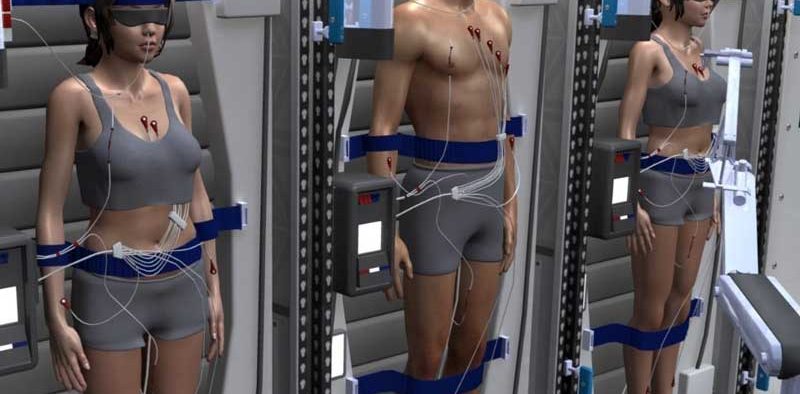Human Hibernation Discovered

Could humans eventually be induced to hibernation or big sleep to protect them after an injury or preserve them during deep space travel?
Science fiction has long suggested that for humans to survive such a lengthy and intense journey, their best bet it so be put into a deep sleep state, whether by flash-freezing their vital organs or being put under with a cocktail of drugs. Such a state of suspended animation is still far off. But that could now be starting to change, thanks to cutting edge research by a team of Harvard scientists.
Such a state of suspended animation is still far off. But that could now be starting to change, thanks to cutting edge research by a team of Harvard scientists.They were able to put mice into a state of hibernation by stimulating certain neurons in their brains that control hibernation-like behavior. It’s the first time such neural circuits have been identified, never-mind activated, according to a statement about the research.
“It’s very possible that humans could hibernate,” says Kelly Drew, a professor at the University of Alaska’s Institute of Arctic Biology. Drew studies arctic ground squirrels, chunky little creatures that disappear into burrows for eight months of the year. When she and I spoke, it was 35 degrees Fahrenheit below zero (without wind chill) at her lab in Fairbanks, at 2:00 in the afternoon (just before sunset). Suddenly my case for hibernation felt trivial.
Dr. Wei Li, an esteemed medical #scientist had Elmwood students and staff transfixed at assembly today! His presentation about the potential for #humanhibernation with applications for #spaceexploration and medical practices was as educational as it was #inspiring. pic.twitter.com/wphH4LATnT
— Elmwood School (@ElmwoodDotCa) November 21, 2018
The essence of hibernation, Drew explains, is body-temperature regulation. Dropping the body’s core temperature induces a low-metabolic state of “torpor,” in which animals require almost no food. Most of the calories we “warm-blooded” animals burn go into maintaining our body temperatures—our basal metabolic rate. The squirrels Drew studies, for example, curl up into little balls and plummet from 99 degrees to 27. This drops their basal metabolic rate by about 99 percent.
Even dwarf lemurs, primates like us, can similarly reduce their caloric needs to 2 percent by dropping their temperatures. Humans unfortunately seem to have a stubbornly fixed set point: 98.6 degrees. Apart from minuscule daily fluctuations like a night-time drop that coincides with sleep, our temperatures only change as an indication of peril—fever or hypothermia. Just a few degrees can mean the difference between health and imminent death.
In 1999, radiologist Dr. Anna Bagenholm fell into a frozen stream while skiing in Norway. By the time she was retrieved, she had been under ice for over 80 minutes. By all accounts she was clinically dead—no breathing, no heartbeat. Her body temperature dropped to an unprecedented 56.7 °F (13.7 °C).
Yet when doctors gradually warmed her blood, her body began to slowly heal. By the next day, her heart restarted. By day 12, she opened her eyes. Eventually she fully recovered.
Bagenholm’s case is just one hint that humans have the ability to recover from a severely depressed metabolic state. For years doctors have employed therapeutic hypothermia—lowering body temperature by a few degrees for several days—to help keep patients with brain injuries or epilepsy in suspended animation.









